



Chinese smartphone-maker Vivo, which entered India nearly four years ago, is now truly working to 'Make in India', with its Greater Noida manufacturing facility.
From a tiny chip to the final packaged smartphone, the facility employs 5,000 people working in shifts and even makes the newest and most high-end NEX series here.
Moneycontrol took a tour of the facility, and here is a look at the journey of a Vivo smartphone:
After an "air shower" through a narrow passage at the entrance to ensure there is no dust or unwanted particles on our company-provided coats, caps and non-conducting footwear, we entered the surface mount technology area, where components are placed directly on the printed circuit boards (PCB) that form, in a way, the "brain" of the phone.
Here is what we saw:
The PCB-plate full of chips:
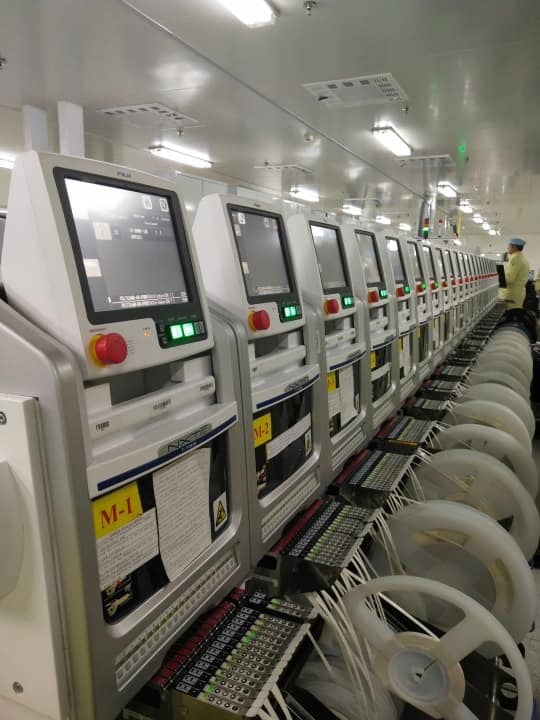 PCB components being placed on the boards
PCB components being placed on the boards
They are then put through an automatic optical inspection, instantly cooling components placed on the PCB from 260 degrees Celsius.
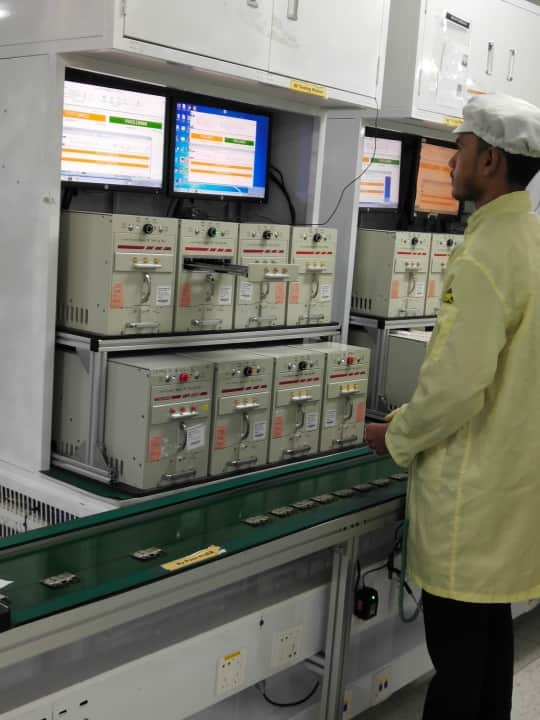 PCBs being inspected after the components are mounted
PCBs being inspected after the components are mounted
The radio frequency components, including Bluetooth, WiFi and GPS are also tested after being mounted on the PCBs.
The applications intended for PC components are also coded into the board.
The PCB story in numbers:
|
THE ASSEMBLY UNIT
After the PCB is tested, the process of putting together the phone begins.
The workers in the assembly line put together various components— cushions, front and back cameras, boards, USB jacks, ear phone jacks and so on — before covering it with the final phone frame.
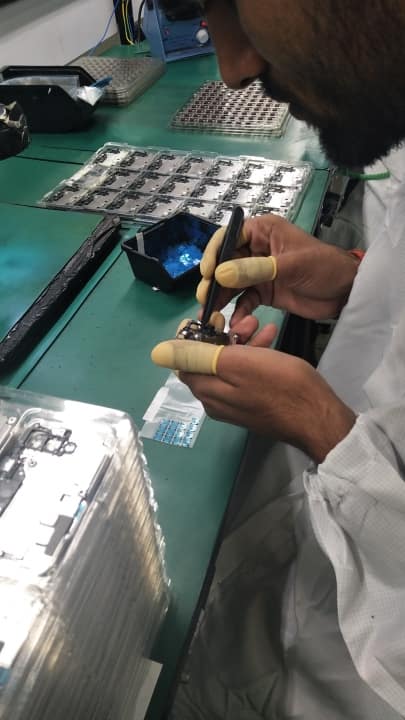 Camera component being placed around PCB. Notice the ESD "finger gloves"
Camera component being placed around PCB. Notice the ESD "finger gloves"
The workers testing and placing components have to wear electrostatic discharge coat or ESD finger gloves that prevent body charges from interfering with the manufacturing process.
 Front and back Camera components ready to assemble
Front and back Camera components ready to assemble
The facility is kept spotlessly clean to ensure no dust or outside elements enter or interfere with the phone.
After the camera is placed, the speakers are installed. Before that though, the speaker holder is placed through a dust mesh to ensure no dust particles get into the components.
Next, the phone frame is put in place, but not before going through an intensive process of ensuring no dust particles (yes, again).
The phone also gets a liquid injection to provide water resistivity.
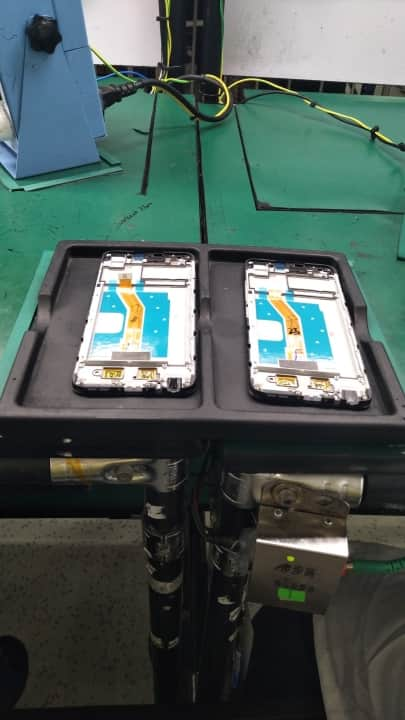 Phone frame placed around PCB with phone components after rigorous testing for proper functioning and dust
Phone frame placed around PCB with phone components after rigorous testing for proper functioning and dust
The battery is then placed inside the phone frame before the back cover is placed to complete the unit.
 Phone units after placing battery
Phone units after placing battery
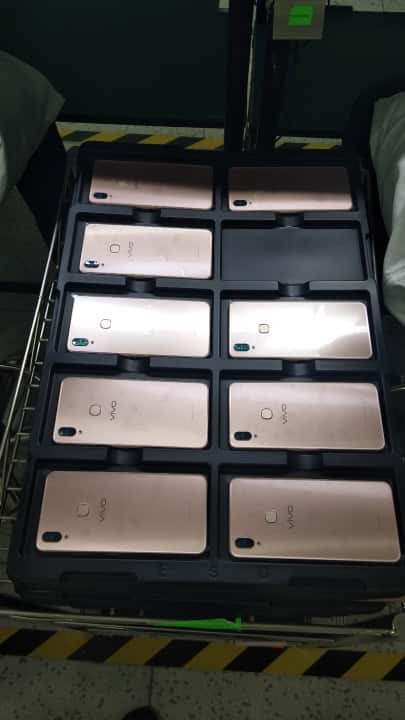 Back cover after battery placement
Back cover after battery placement
Thereafter, the complete unit is connected to chargers and battery is charged for 45 minutes. This provides charge for initial operation and also tests the battery units.
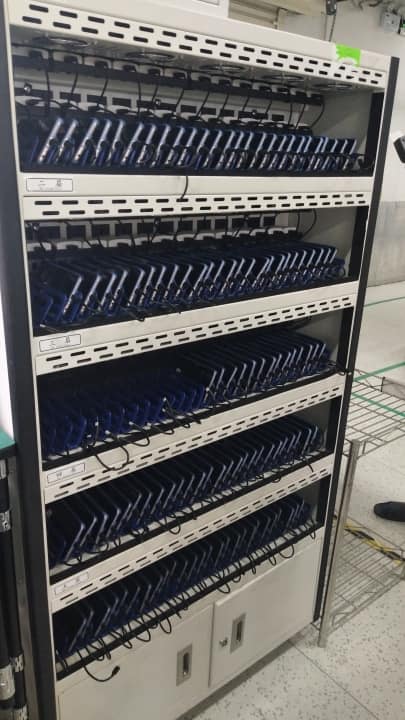 Phone units put on charge for 45 minutes
Phone units put on charge for 45 minutes
Post charging, the phones go for an automated testing process to check if the various components- camera, audio,video, GPS are working fine.
The screens of the phones are then tested for proper operation by tapping the icons and pre-loaded applications.
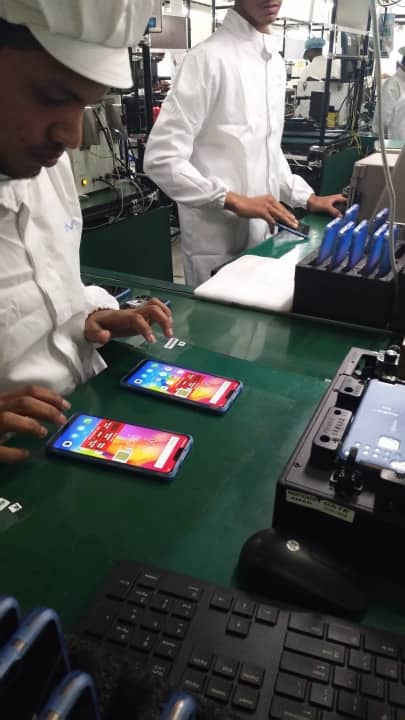 Screen testing for operation
Screen testing for operation
Post the testing for physical components, an automated 15-digit IMEI number is assigned to each device, which becomes its default identification.
The number is used by the phone network to identify valid devices. Another person scans this IMEI card and the weight of the final product is measured.
The phone is then packed into the correct boxes, along with the battery charging unit, warranty papers and the user manual.
The final product is thus ready:
 Final Vivo phone post packaging.
Final Vivo phone post packaging.
Post this, the phone is sent for testing where it undergoes about a thousand tests, including a drop test, humidity test and extreme conditions tests.
The Vivo manufacturing facility fact sheet:
|

Discover the latest Business News, Sensex, and Nifty updates. Obtain Personal Finance insights, tax queries, and expert opinions on Moneycontrol or download the Moneycontrol App to stay updated!
Find the best of Al News in one place, specially curated for you every weekend.
Stay on top of the latest tech trends and biggest startup news.